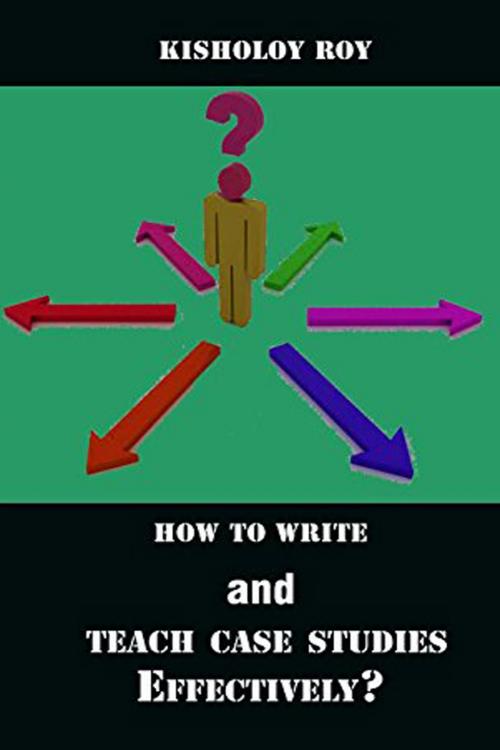| Author: | Dr Kisholoy Roy | ISBN: | 9781370234196 |
| Publisher: | Dr Kisholoy Roy | Publication: | November 9, 2017 |
| Imprint: | Smashwords Edition | Language: | English |
| Author: | Dr Kisholoy Roy |
| ISBN: | 9781370234196 |
| Publisher: | Dr Kisholoy Roy |
| Publication: | November 9, 2017 |
| Imprint: | Smashwords Edition |
| Language: | English |
It is a known fact that case based teaching has always been found to facilitate two way learning in class and have contributed to the healthy development of future professionals for it is one tool that makes student apply, think and come out with solutions and appreciate situations.
However for all this to happen there are two important ingredients to satisfy. One the case study itself. That is the quality of its development, the amount of research that has gone into its making and the way the case study has been presented. Case studies which are not engaging the target audiences can never be acceptable cases.
The second important aspect is at the delivery point where teachers come into the picture. How is a case being delivered to students? How are they being administered a case study? What sort of facilitation is being offered by the faculty? These all have a bearing on the quality of learning through cases.
This book deals with all these in three sections in a vivid and lucid manner. Also there are number of examples cited plus sample cases and other research materials given to explain the differences that exist in each of them.
It is a known fact that case based teaching has always been found to facilitate two way learning in class and have contributed to the healthy development of future professionals for it is one tool that makes student apply, think and come out with solutions and appreciate situations.
However for all this to happen there are two important ingredients to satisfy. One the case study itself. That is the quality of its development, the amount of research that has gone into its making and the way the case study has been presented. Case studies which are not engaging the target audiences can never be acceptable cases.
The second important aspect is at the delivery point where teachers come into the picture. How is a case being delivered to students? How are they being administered a case study? What sort of facilitation is being offered by the faculty? These all have a bearing on the quality of learning through cases.
This book deals with all these in three sections in a vivid and lucid manner. Also there are number of examples cited plus sample cases and other research materials given to explain the differences that exist in each of them.















